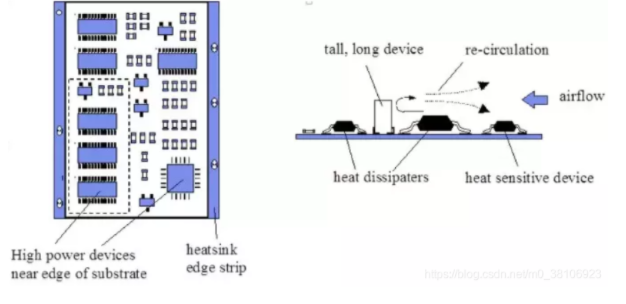It is very important for PCB circuit boards to conduct good heat dissipation. When electronic equipment is working, a certain amount of heat will be generated, which will cause the internal temperature of the equipment to rise rapidly. Failure, the reliability of electronic equipment will decline.

1. PCB heat dissipation
The PCB's own heat dissipation is a simple, practical, and low-cost heat dissipation method. At present, PCB circuit board materials are mainly: copper clad/epoxy glass cloth substrate or phenolic resin glass cloth substrate. Although these substrates have excellent electrical properties and processing properties, they have poor heat dissipation and can hardly be counted on the PCB itself to conduct heat. . Therefore, it is necessary to design heat dissipation from the surface of the component to the surrounding air.
So how to do it? The best way is to improve the heat dissipation capacity of the PCB itself that is in direct contact with the heating element, and conduct or radiate through the PCB board. For example, adding heat-dissipating copper foil and using copper foil with a large area power supply, heating vias, exposing copper on the back of the IC chip, reducing the thermal resistance between the copper skin and the air, and so on.
2. Optimize the layout of components
The components on a PCB printed board should be arranged as far as possible according to their calorific value and degree of heat dissipation. Devices with low calorific value or poor heat resistance (such as small signal transistors, small-scale integrated circuits, electrolytic capacitors, etc.) should be cooled At the top of the airflow (at the entrance), devices with large heat or heat resistance (such as power transistors, large-scale integrated circuits, etc.) are placed at the most downstream of the cooling airflow. Avoid the concentration of hot spots on the PCB, distribute the power evenly on the PCB board as much as possible, and keep the PCB surface temperature performance uniform and consistent.
The heat dissipation of the printed board in the equipment mainly relies on air flow, so the air flow path should be studied during the design, and the device or printed circuit board should be reasonably configured.
In the horizontal direction, the high-power devices are arranged as close to the edge of the printed board as possible to shorten the heat transfer path; in the vertical direction, the high-power devices are arranged as close as possible to the top of the printed board to reduce the influence of these devices on the temperature of other devices.